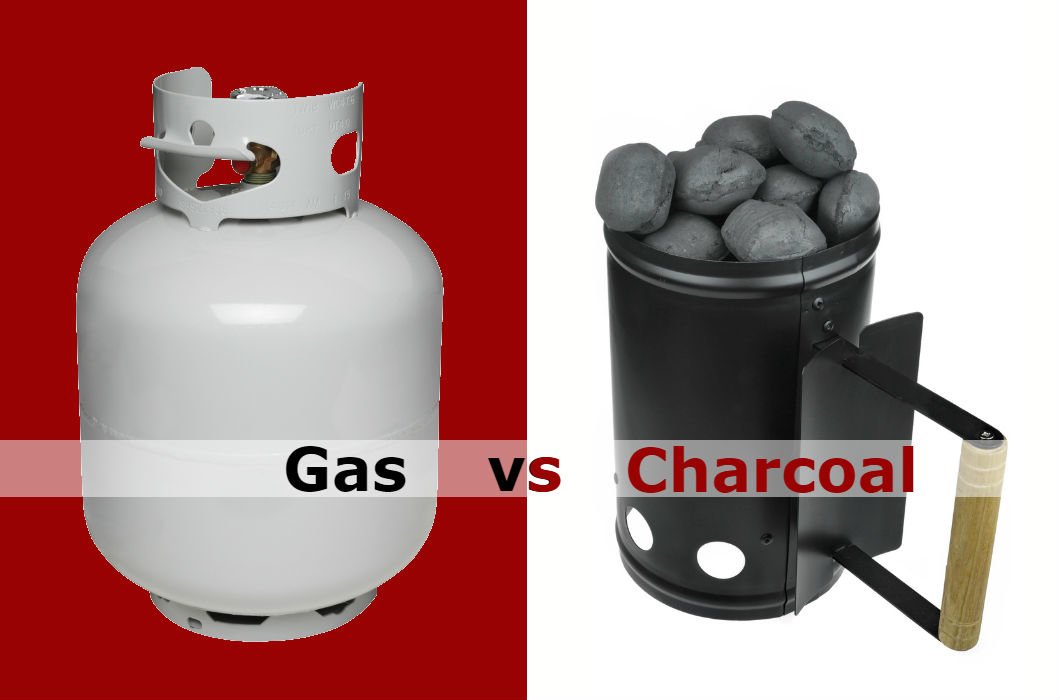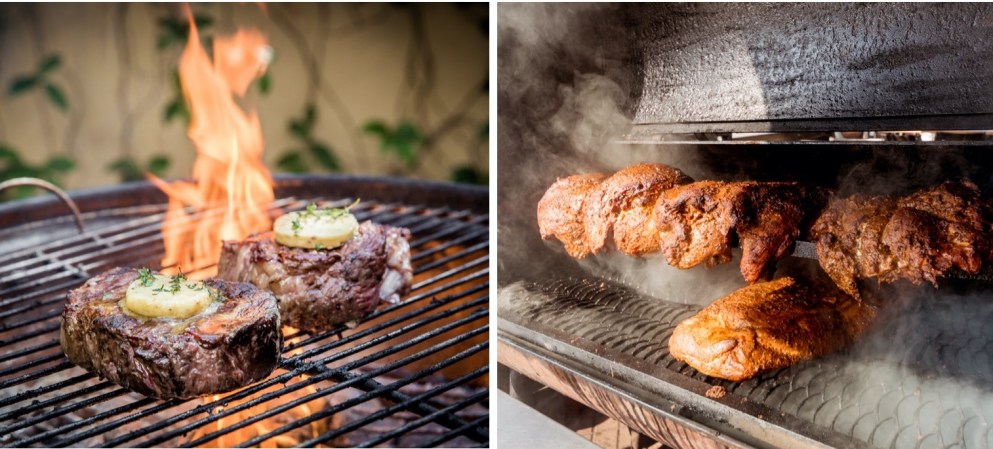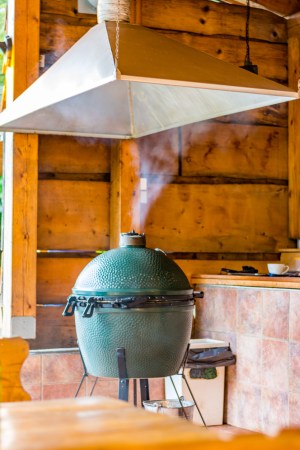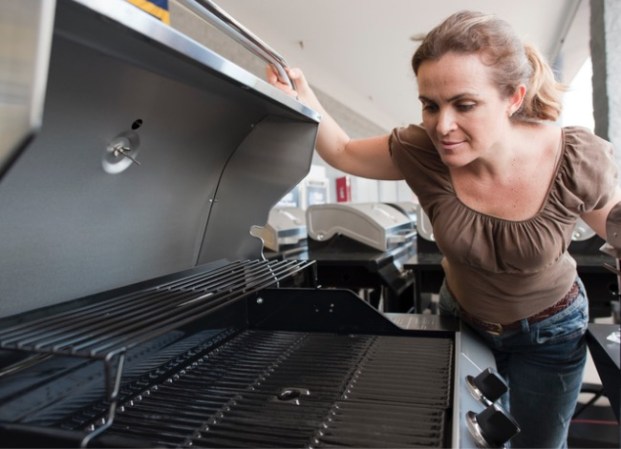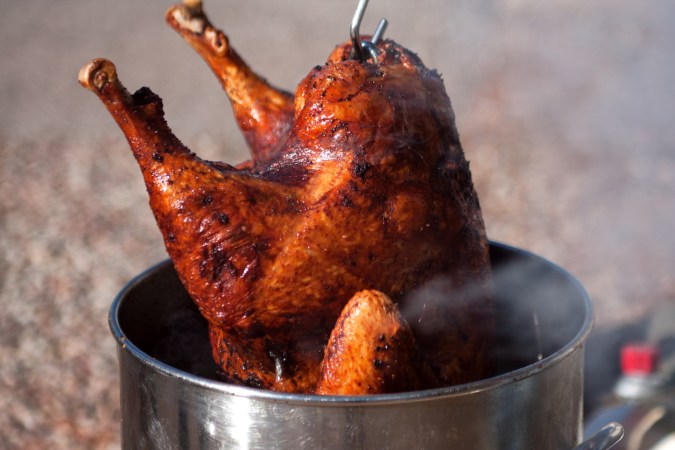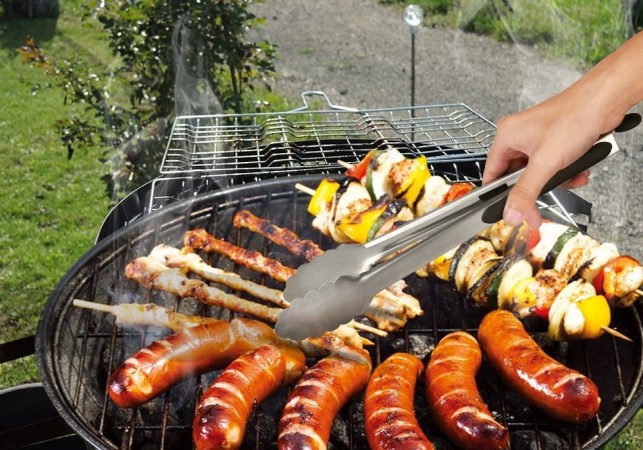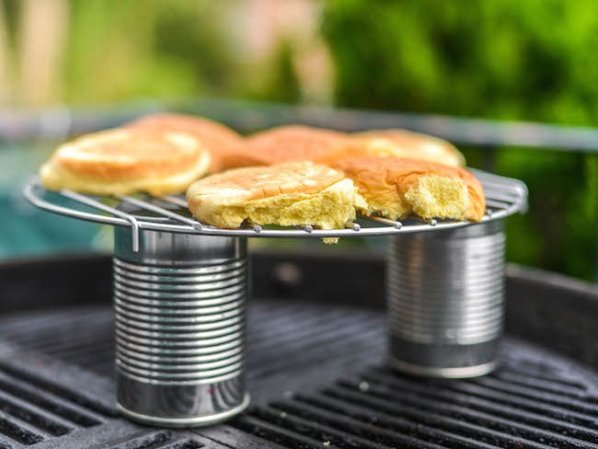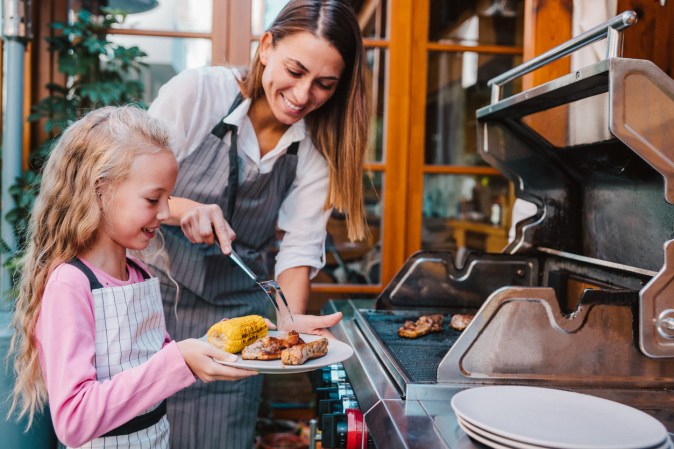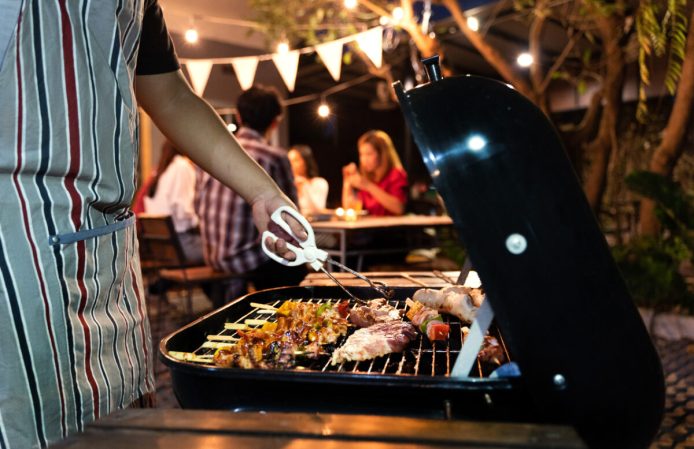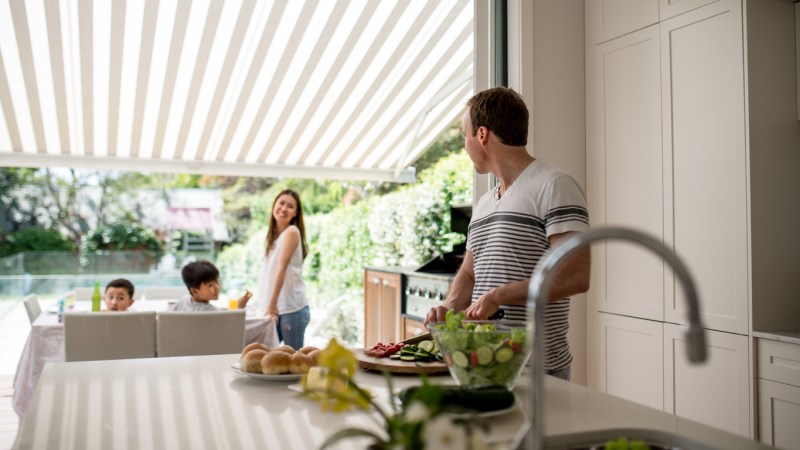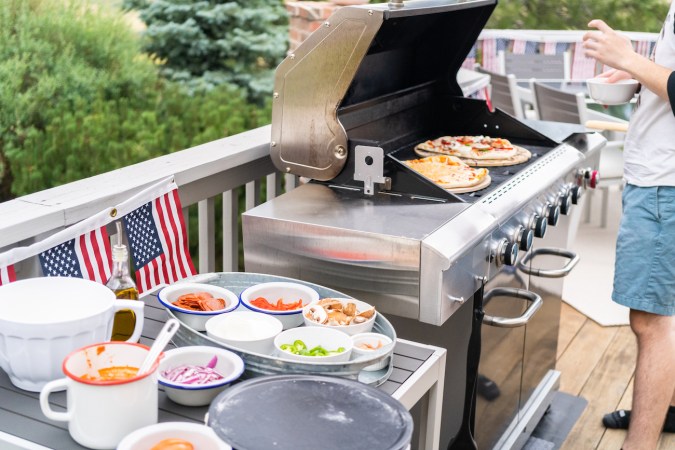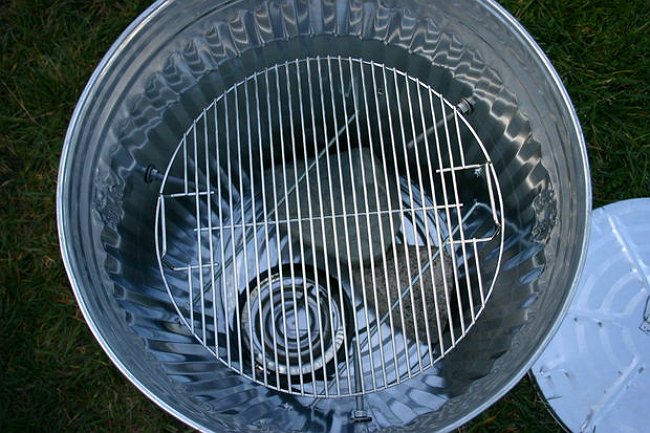We may earn revenue from the products available on this page and participate in affiliate programs. Learn More ›
To become the kind of grill master who wows crowds at family cookouts, you need the right equipment. The two most popular types of grills, gas and charcoal, each have ardent devotees and can help you prepare your favorite grilled fare. But in the battle of gas vs. charcoal grill, which does so more quickly, easily, affordably, and deliciously?
Ahead, we’ve pitted the two options against one another—gas vs. charcoal grills—so that the key differences will help you determine which best suits your lifestyle, culinary preferences, and budget.
The Benefits of a Gas Grill vs. Charcoal Grill
If your main concern is getting those burgers or steaks cooked and on the dinner table as quickly as possible, you’ll probably be happiest with a gas grill. These grills heat up quickly, allow you to control the temperature to your liking, and don’t require frequent purchases of fuel. Other benefits of gas vs. charcoal include:
- Gas grills don’t produce messy piles of ash and are generally easier to clean than charcoal grills.
- Gas grills don’t emit nearly as many harmful air pollutants—including carbon dioxide, carbon monoxide, and soot—as charcoal grills.
- Gas grills typically have two or more burners with separate temperature controls, allowing you to create different temperature zones for cooking various types of meat, fish, or vegetables.
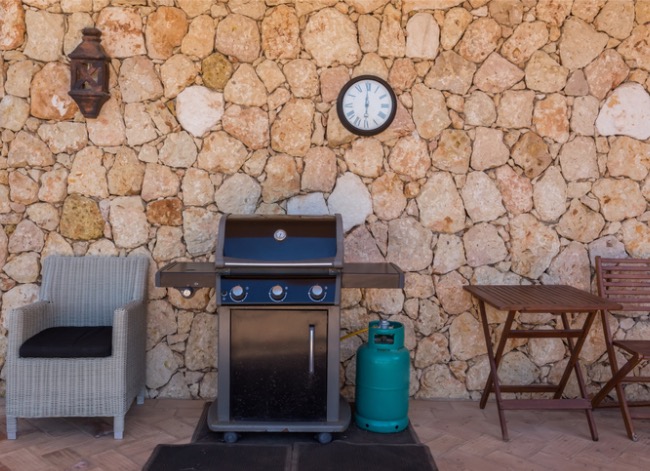
The Benefits of a Charcoal Grill vs. Gas Grill
If you’re a barbecue purist, enjoy the primal thrill of creating a fire for cooking, or like the flavor charcoal imparts to cooking foods, then you’ll likely be happiest with a charcoal grill. Because it’s not as convenient as a gas grill, you’ll gain far more bragging rights as “master of the grill” when you turn out perfectly cooked steaks or burgers on a charcoal grill. Other benefits of charcoal vs. gas include:
- Charcoal grills are typically smaller than gas grills, often significantly smaller, making them better suited for small patios or yards.
- Charcoal grills are usually less expensive than their gas counterparts.
- It’s hard to beat the smoky deliciousness imparted by a charcoal grill, especially if you use charcoal derived from strongly smoky woods such as hickory or mesquite.
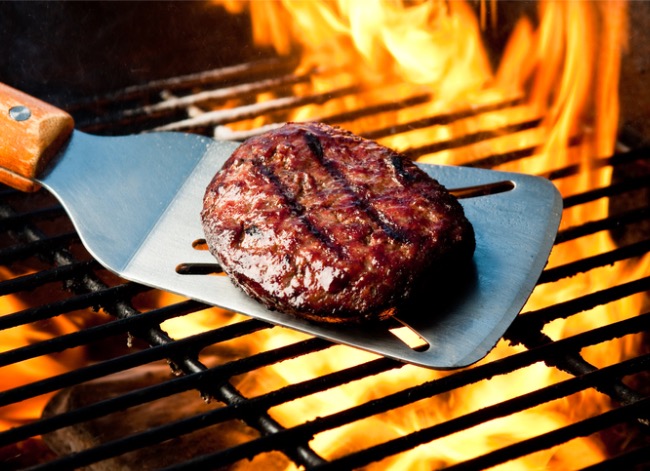
Charcoal grills are less expensive than gas grills.
A basic charcoal grill has a fairly primitive setup with fewer components—typically just a grill grate laid over a rounded metal charcoal chamber with attached legs—so you can find one for as little as $15 and top out at around $150. A gas grill, consisting of a grill unit with an attached wheeled frame plus a gas tank, will burn a bigger hole in your wallet—anywhere from $130 to $300.
RELATED: The Best Grill Models of 2021
Gas grills offer better fuel economy than charcoal grills.
The fuel for charcoal grills is more short-lived and thus more expensive per use. It will set you back around $10 for a typical 20-pound bag of charcoal, but this would last you only three grilling sessions on average, costing around $3.30 each time. It would cost you $15 to fill a typical 20-pound fuel cylinder with propane gas, which would last you 25 grilling sessions and cost about $0.60 per session.
Gas grills heat up faster.
Making burgers on a busy weeknight is a cinch with a gas grill, which can take under 10 minutes to reach cooking temperature (usually a minimum of 130 degrees Fahrenheit) from the time you ignite it. This is because the grill is directly connected to the fuel source—either a tank in the grill frame filled with propane, liquefied petroleum gas (also known as butane), natural gas, or a gas supply line in your home. There’s no need to manually light the gas or wait for it to heat up; the gas flame ignites with the press of an ignition button.
Charcoal grills take on average between 15 to 20 minutes to reach cooking temperature. You must first light the fuel source—either natural lump charcoal or condensed blocks of coal known as charcoal briquettes—then wait for the charcoal to turn into embers that radiate heat to cook food.
RELATED: The Best Gas Grills of 2021
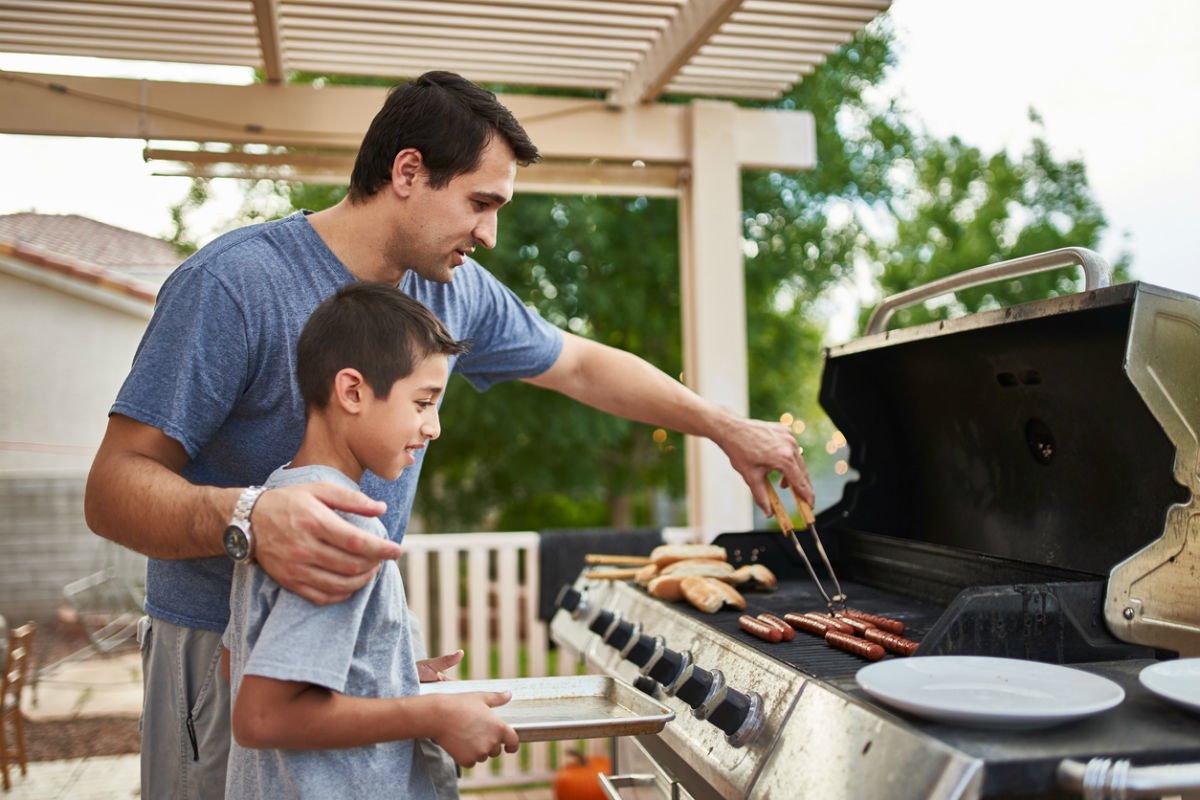
Gas grills offer easier temperature control.
Adjusting the temperature on a gas grill is usually as simple as turning a dial. To increase or decrease heat intensity in a charcoal grill, you must manually add or remove coals from the charcoal chamber, adjust the position of the food on the grill grate to be closer or farther from the flame, or open or close the grill’s oxygen intake vents. An infrared thermometer lets you determine the temperature quickly and accurately.
Charcoal grills usually give foods a smokier flavor.
Charcoal grills produce a good deal of smoke, but the burning of complex organic molecules in the charcoal produces aromatic compounds. When the smoke and aromatic compounds interact with food, they imbue it with a distinctive char-grilled quality that improves depth of flavor in such fare as steak and poultry. For the utmost in smoky deliciousness, consider a kamado grill, which smokes meat slowly.
Gas grills emit less smoke and, as a simpler molecule, gas produces only water and carbon dioxide when fully combusted. So while gas imparts food with a less pronounced flavor, that’s a plus when grilling fish, veggies, fruits, and other delicate fares.
RELATED: The Best Charcoal Grills for Outdoor Cooking
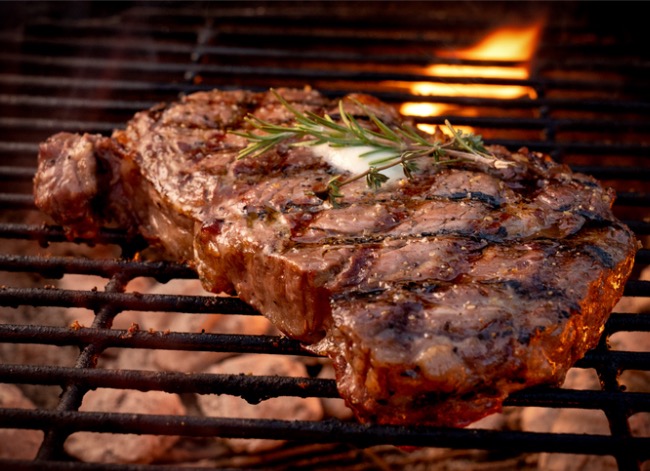
Gas grills are easier to clean.
There’s generally little to no ash to contend with in a gas grill. While food drippings often settle on the grill grate and grill base, the gas vaporizes most of it. That means when it’s time to clean a gas grill, you can simply scrub down the grill base and grate with a grill brush.
The burning of charcoal produces a great deal of ash in the charcoal chamber, and fallen food drippings tend to accumulate over time. To clean a charcoal grill, you’ll first have to empty the ashes from the chamber before scrubbing down the base and grate with a grill brush.
On both grill types, when grease hardens and accumulates, apply a degreaser to the soiled area (we like the grill cleaning spray from the Citrusafe Grill Care Kit), let the solution sit for a few minutes, then use a garden hose to rinse it off.
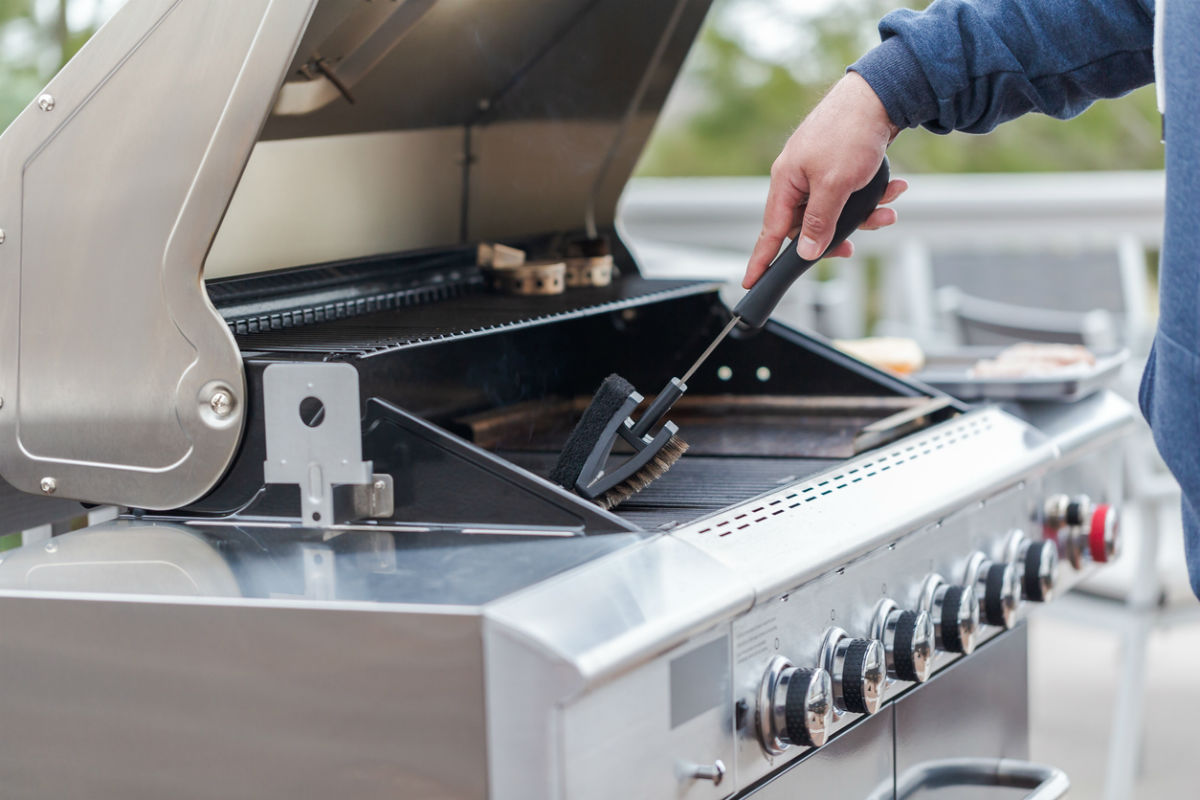
Gas grills are more eco-friendly.
Eco-friendly homeowners hoping to reduce their carbon footprint should know that gas is the greener grilling method. A Department of Energy study on the carbon output of grills found that a gas grill fueled by liquefied petroleum gas generated only 5.6 pounds of carbon dioxide per hour—nearly half as much—as the 11 pounds per hour generated by charcoal grills.
RELATED: The Best Gas Grills Under $1,000 in 2021
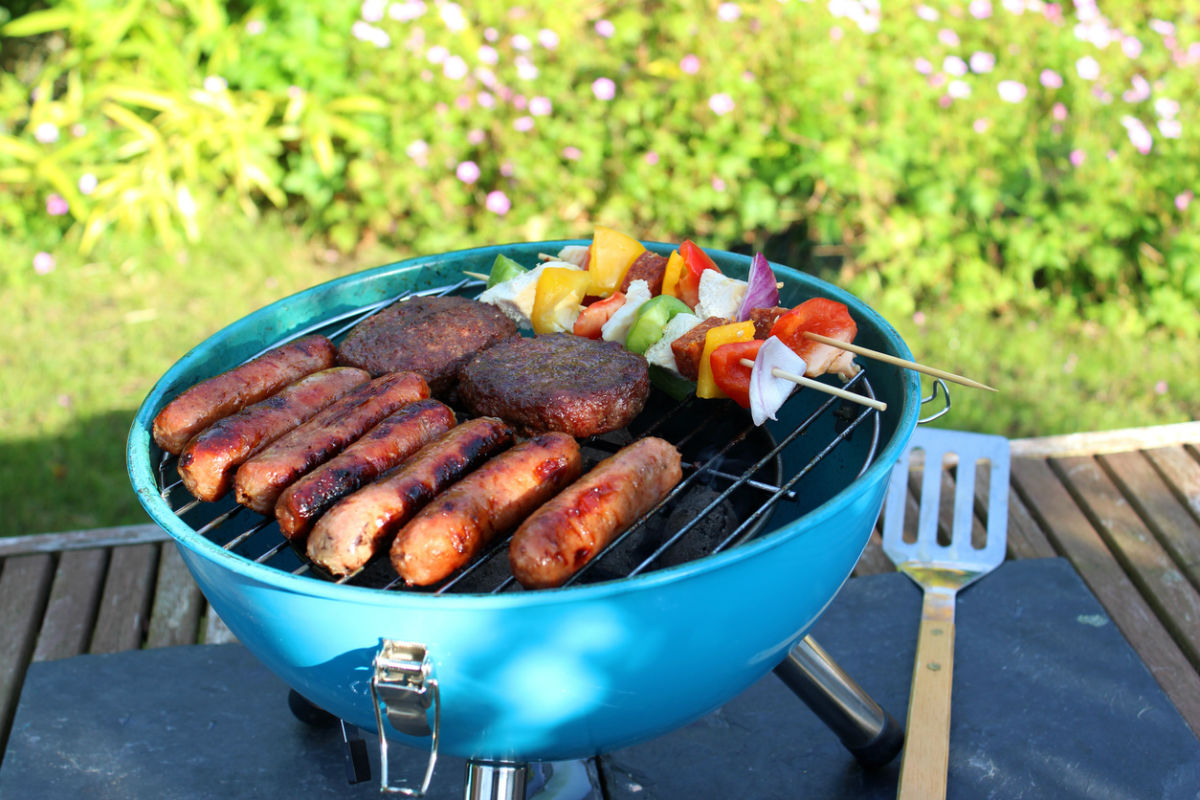
Charcoal grills are more portable.
You can tote a charcoal grill with you to a tailgating event, local park, or campsite thanks to the smaller size and the lack of a gas tank. Single-use charcoal grills (such as Oppenheimer USA’s Disposable Charcoal Grill on the Go) are lightweight and convenient but are not recyclable. The more cumbersome assembly of a gas grill—coupled with the fire risk of toting around a gas tank—makes it too unwieldy for travel.
RELATED: The Best Portable Charcoal Grills of 2021
Final Thoughts
In the gas grill or charcoal grill debate, if you’re firmly on Team Charcoal, it’s hard to go wrong with the 22-Inch Weber Original Kettle Grill. It’s big enough for a dozen burgers, reasonably easy to clean, and turns out deliciously smoky food. If you prefer the convenience of a gas grill, then the 54-Inch Cuisinart CGG-7400 Four-Burner Gas Grill is a reasonably priced option with plenty of bells and whistles. Chefs who want to explore even more ways to cook outside (and purchase even more cooking implements) might next contemplate the “smoker vs. grill” debate.
FAQs About Charcoal vs. Gas Grills
Both charcoal and gas grill options can cook up tasty meats, seafood, and vegetables. Still, unless you already have firm opinions one way or another in the charcoal vs. gas grill battle, you might have more questions as to which is the best choice.
Q. Is a gas grill worth it?
If time is limited and you value convenience, a gas grill is definitely a worthwhile purchase.
Q. Are steaks better on a charcoal or gas grill?
You can cook delicious steaks on either a gas or charcoal grill, but it’s undeniable that a charcoal grill imparts a slightly smoky flavor to the sizzling meat that many people feel transforms a steak from good to great.
Q. Does food really taste different when you grill on gas vs. charcoal?
Smoldering charcoal creates smoke particles that flavor the meat sizzling above the briquettes. The flavor is especially strong when burning charcoal from hickory or mesquite woods. But while the smoky flavor of charcoal adds extra zest to beef and chicken, it’s not necessarily an improvement on the more delicate flavors of fish or vegetables.
Q. How does a charcoal grill work?
A basic charcoal grill consists of a basin to hold the charcoal, a stand to support that basin, a lid that fits over the top of the grill, and a cooking surface. To use the grill, you light the charcoal briquettes on fire, allow the flames to dwindle to a smolder, and then place your food on the cooking surface poised a few inches over the embers.
Q. How does a gas grill work?
Gas grills are far more complex than charcoal grills, and typically have temperature controls for each burner, a hose attaching to the gas source—most often propane, although natural gas is also an option—an electric starter to get the flame going, a cooking surface, a lid, a grill body, and a stand. To use the grill, you use the starter to ignite the gas, and then set your desired temperature before placing your food on the cooking surface.
